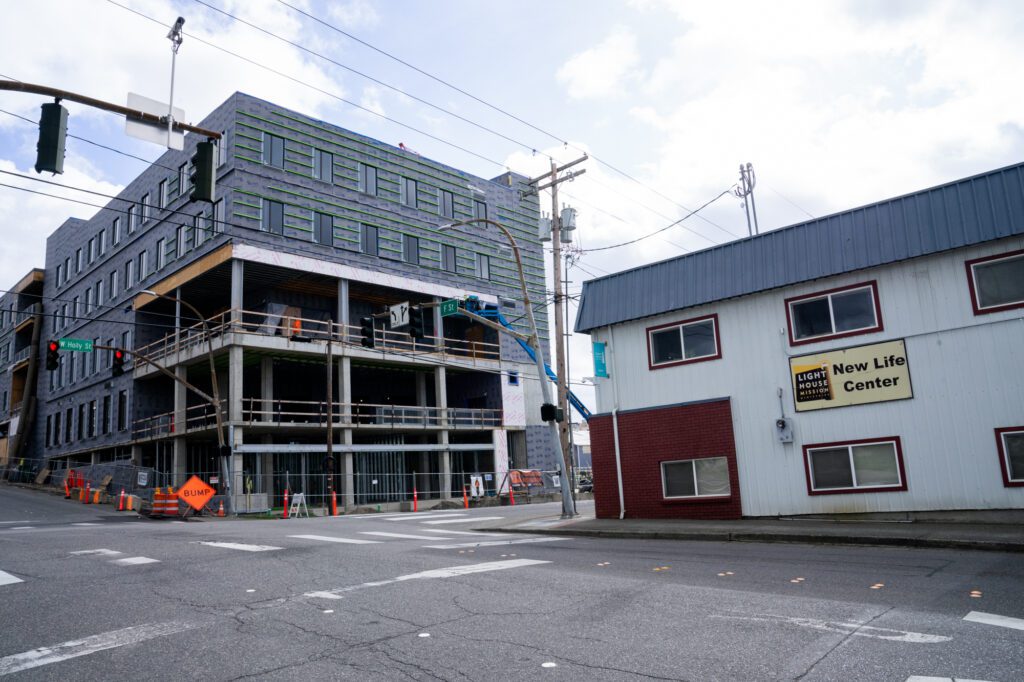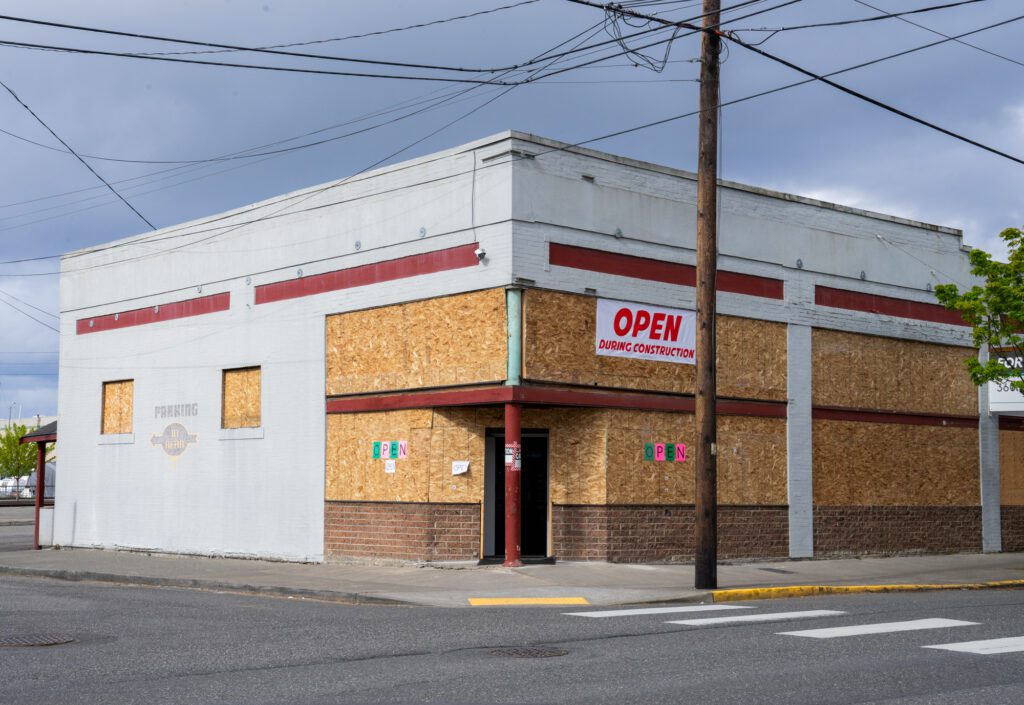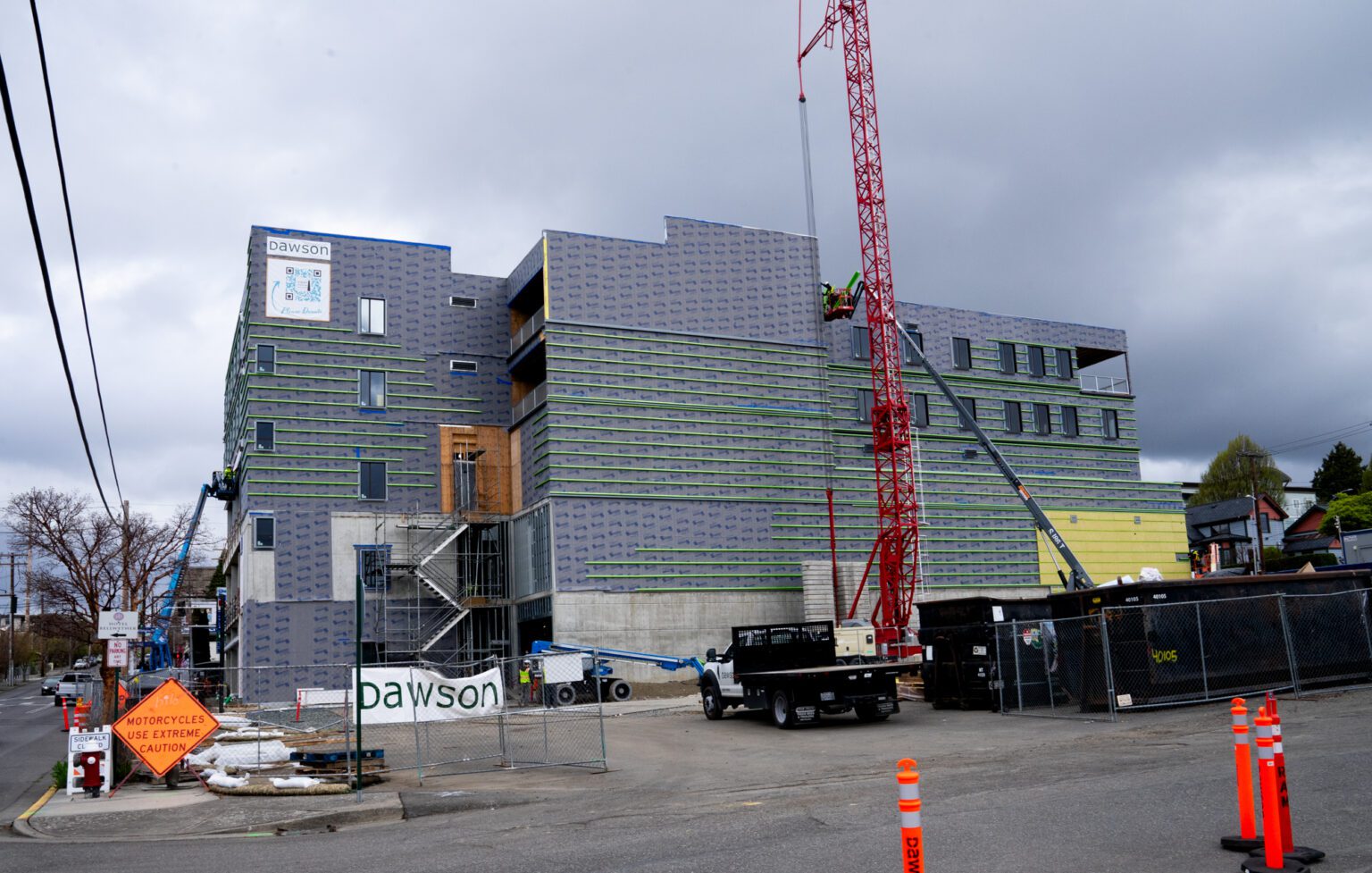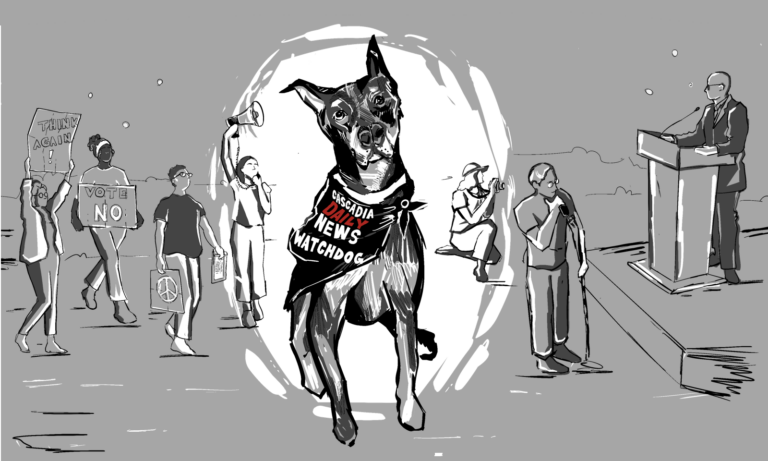Bellingham’s Old Town revitalization project will get a much-needed investment of $3 million in funding.
The Old Town Urban Village plan is meant to revitalize an 18-block area northeast of Roeder Avenue and Chestnut Street. The developers, Pete Dawson and Curt O’Connor, envision 500 units of housing, including affordable housing, parking and a commercial district that will serve the Bellingham community. The area is also the site of the new 300-bed Lighthouse Mission Ministries homeless shelter, being built by Dawson’s construction company.
The funding is the next step in what’s turned into a 15-year journey for Bellingham and indicates buy-in from all sides in what’s become a public-private partnership, those involved in the project said. Bellingham City Council members voted to approve the funding Monday, April 15, with five members voting in favor and two members absent.
“We’ve got a bright future there,” said Tara Sundin, the community and economic development manager for the City of Bellingham.

Plans to revitalize the Old Town area, which includes Old City Hall, the Territorial Courthouse and extends down to Maritime Heritage Park, began in 2007 with the city staff and the community working together to create a vision. And while the Bellingham City Council voted on the final master plan in 2008, the Great Recession delayed the project and a development agreement lapsed.
Years later, Dawson and O’Connor approached the city in April 2023 about jumpstarting the Old Town redevelopment.
“We’re proposing to redevelop a site that has been … neglected for a century,” O’Connor told the Bellingham Planning Commission at the time.
Since then, the developers have worked to create a vision plan for the area, purchased an additional tract of property and have started renovations on one of the buildings in the area.
But before construction can start, infrastructure upgrades are needed in the area. The $3 million from Whatcom County, comprising a $1.5 million loan — to be paid back by the city over 20 years with a 1% interest rate — and a $1.5 million grant, will allow the city to make street improvements, such as adding new curbs and gutters, repaving and creating future sidewalk crossing areas, on C Street (from Holly Street to the end of the street at Maritime Heritage Center), on D Street (between Holly and Astor Street) and on Astor Street (from F to C Street). Stormwater improvements would also be made.
The Lighthouse Mission shelter would also benefit from the street improvements, as the city would reconstruct Astor Street between E to F Street, and place underground electrical lines.
Sundin and O’Connor admitted that the redevelopment — projected to take place over the next 10 years — was a risky investment because of the area’s history. The area previously was the site of the Northwest Recycling facility and it’s near railroad tracks.

With the city investing $2.35 million for infrastructure improvements for almost six blocks of streets, the additional $3 million from the county will cover the remaining three blocks.
“It’s definitely been a private-public partnership in its truest form,” O’Connor said Wednesday, April 10. “And without the public piece, we wouldn’t be interested.”
The street improvements are critical to starting the full area redevelopment, O’Connor said.
There’s already some movement on upgrades in the area. The building that houses Hana Teriyaki, located at 701 W. Holly St., is going through a renovation while another building in the 700 block of Holly Street is currently going through the design process for housing units.
Construction on the street infrastructure is expected to start in 2025, Sundin said, with the building design phase following.
“We want to make sure that those street designs make the most sense for today,” she said.
Annie Todd is CDN’s criminal justice/enterprise reporter; reach her at annietodd@cascadiadaily.com; 360-922-3090 ext. 130.




